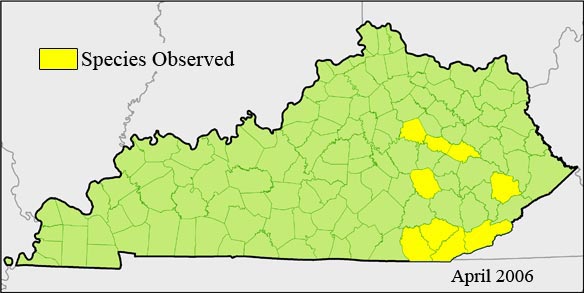P�h�o�t�o� �f�r�o�m� �K�S�N�P�C� �F�i�l�e�s�
|
Habitat:
Bogs, peaty meadows, and damp or seeping thickets or mesic slopes; Has been found on abandoned strip mines (R. Thompson).
|
Species Description:
A glabrous, herbaceous perennial with naked stems that are up to 15 cm high arising from a bulb-like base. The two nearly erect, narrowly elliptic basal leaves are 5-15 cm long and have a broad petiole and a thickened midrib. Several flowers are borne on short stalks at the tops of the stem. Each white to greenish flower has 3 narrowly lance-shaped sepals that are 5-7 mm long, 2 nearly linear petals, and a strap-shaped lip petal that is 4-5 mm long and narrowed at the base. The petals and sepals are united together at the top of the curved, club-shaped ovary. The fruit is a narrowly elliptic capsule with numerous dust-like seeds.
|
Phenology:
Flowering Period: Early May to late July.
|
Additional Information at NatureServe
|
Diagnostic Characteristics:
L. loeselii might be confused with species of Platanthera, but flowers of the latter have a tubular spur and lack a short stalk. In addition, Platanthera species that occur in our fens have leafy stems; the two shiney leaves of L. loeselii are attached near the base and appear somewhat folded. This species differs from Malaxis in having a longer column (ca 3-4 mm) that is strongly curved. The lip of the flower is yellowish-green. Plants are associated with wet woods.
|
Management:
Timber removal would be detrimental.
|
Global Range:
Nova Scotia to Alabama, west very sporadically to Saskatchewan, North Dakota, and Iowa (Washington Natural Heritage Program, 1981). Disjunct in Washington, Klickitat and San Juan Counties (Washington Natural Heritage Program, 1997). In British Columbia, known only from Mara Meadows Ecological Reserve (Douglas, 1989).
|
Known Kentucky Occurrences:

|